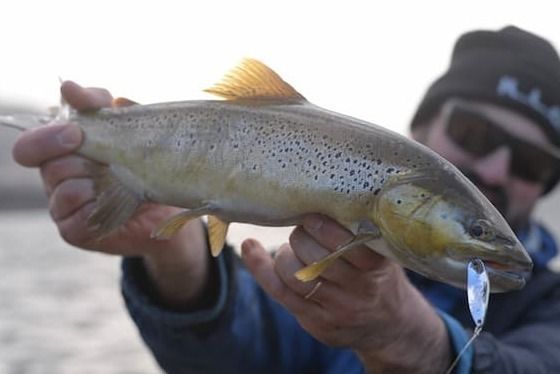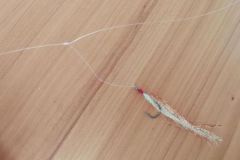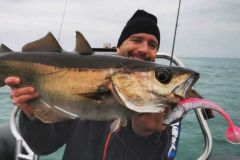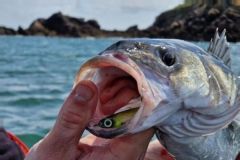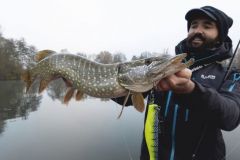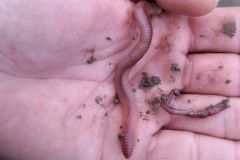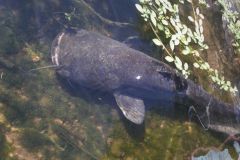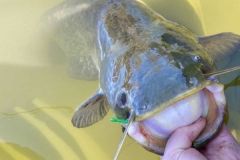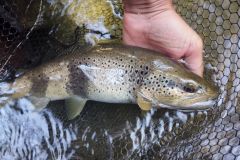The wobbling spoon is an essential lure for salmonid fishing. It's easy to use and effective all season long. Let's take a look at how to get the most out of this little piece of metal and make it even more effective!
Using Assist Hook
The assist hook is a single hook whose shank is extended by a thick braid loop. This provides greater flexibility and swimming freedom. The assist hook is ideal for avoiding unintentional unhooking by limiting the pressure points and stiffness which could help the fish to remove the hook.

Attach the corrugator with a clip
The undulating line can be tied with a loop and a rapala knot. Ideally, however, you should use a suitably sized staple, for several reasons. Firstly, a staple gives the spoon the full swimming range it needs. Secondly, it allows you to quickly change lures to suit the best color and weight for the position.
Vary the colors
Ideally, you should have several colors of ripple. Many anglers prefer to use realistic natural colors. However, don't hesitate to use flashy colors, which regularly give better results!
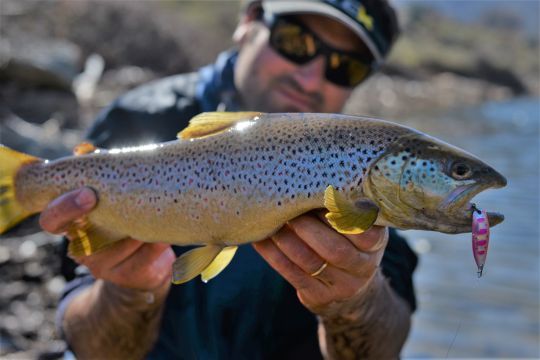
How to animate your lure
The basic animation of the rippling spoon remains linear recovery. On the other hand, you shouldn't deprive yourself of animating your undulating spoon. The twichs, printed by short, sharp scion strokes, throw the undulating spoon off-center and emit strong visual signals. This animation is ideal for triggering an attack from following fish or for making the lure stand out from further away!
Keeping the rhythm after a hit
The undulating spoon makes salmonids react almost systematically. Even if this does not necessarily result in an attack, it is very common to see a trout following the undulating spoon closely. In the event of a light touch or a different swimming sensation to the ripple, don't hesitate to keep up the rhythm and make an animation. This often triggers a more direct attack. You need to remain concentrated and have a sensitive rod.
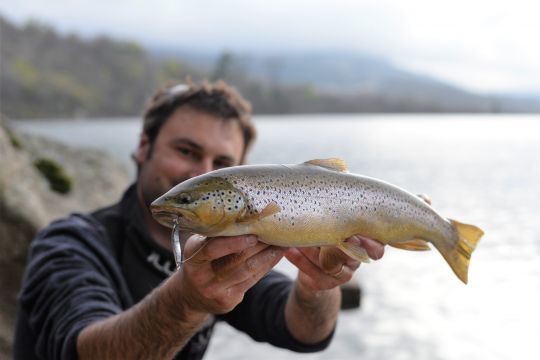
Fine fishing
The finer you fish, the better you'll fish with a ripple. Indeed, a fine line favours a fluid and light swimming action, even on very slow retrieves. Moreover, the ripple will swim well in the coveted layer of water and will not rise to the surface untimely, due to the grip offered by a line too thick in the water.
A trump card for hatchlings
When nothing works and you're fishing with lures, don't hesitate to use small, lightweight models (less than 1.5 grams). In this case, the ripples don't imitate a fish, but an aquatic larva or nymph on which trout will be more reactive.

A sensitive cane
While a rod's sensitivity may not be its most important asset when lure fishing, it is very important when ripple fishing. A sensitive rod gives you a better feel for the workings and swimming action of your ripple. It allows you to perceive the very sensitive and light strokes that can occur on very slow animations. Last but not least, sensitivity allows you to move the lure close to the bottom, while sensing whether the lure is making contact with the substrate.
Several weights
The shape and mass of the wobbling spoon give it a specific range of action. Whether it's retrieve speed or swimming depth, it's important to be able to adapt to the environment. It is also necessary to have several undulators of different weights. A range of 1.5 g, 3.5 g, 7 g and 10 gram models is perfect for a wide variety of situations.
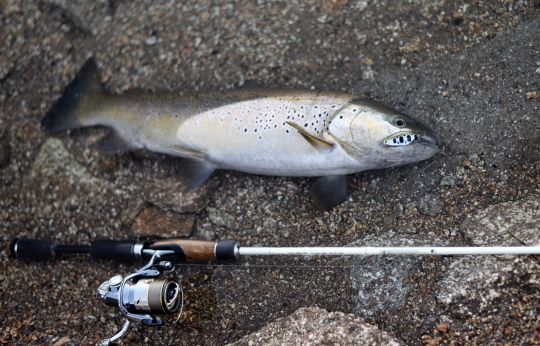
Change your habits
On heavily fished rivers and lakes, fish may be accustomed to the strong stimuli of certain lures, which they perceive as a threat. The wobbling spoon moves naturally without emitting strong vibrations. It's not uncommon to reel in a lot of fish where a spinning spoon or a swimming fish wouldn't even raise an eyebrow.

 /
/ 